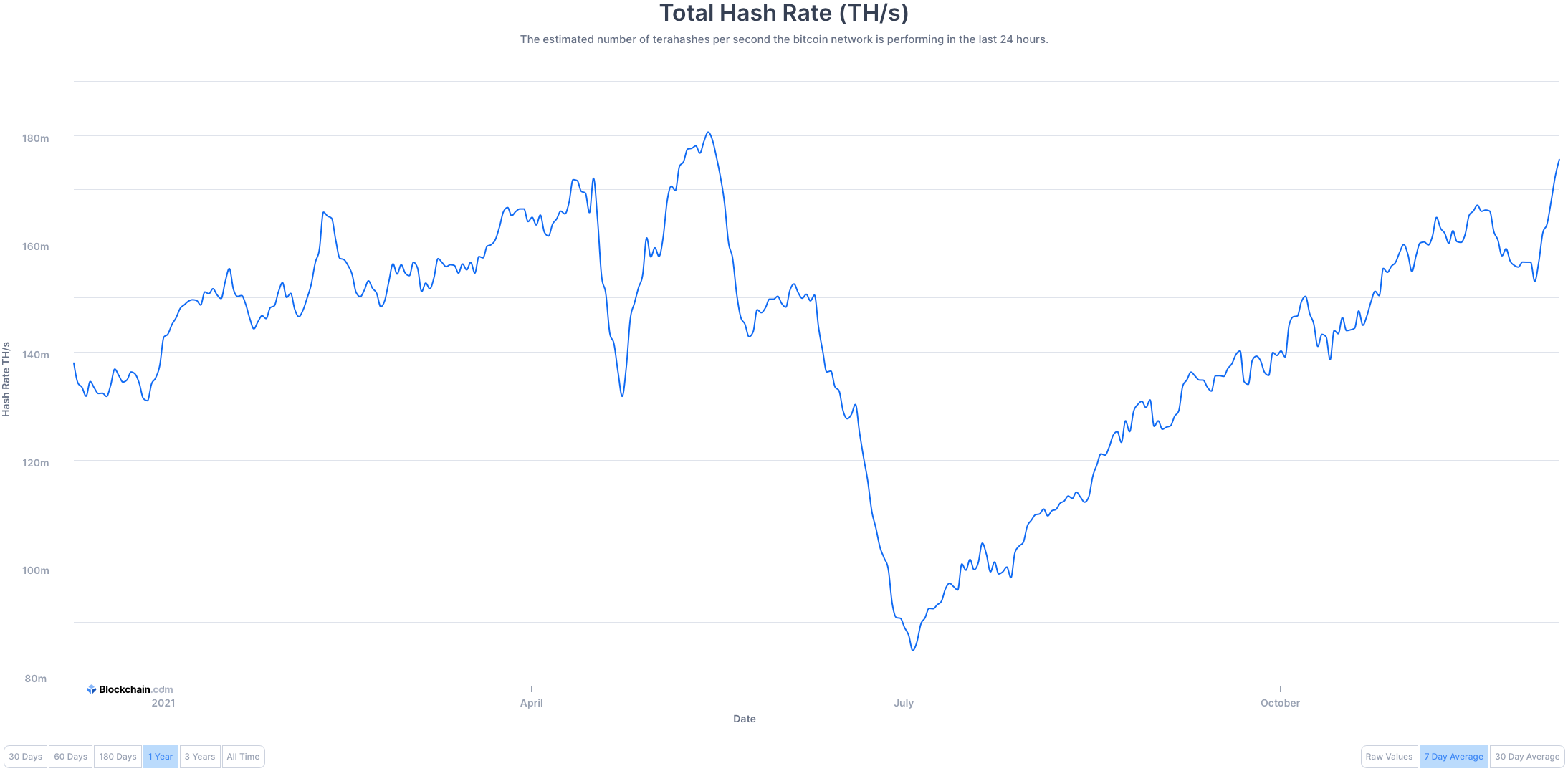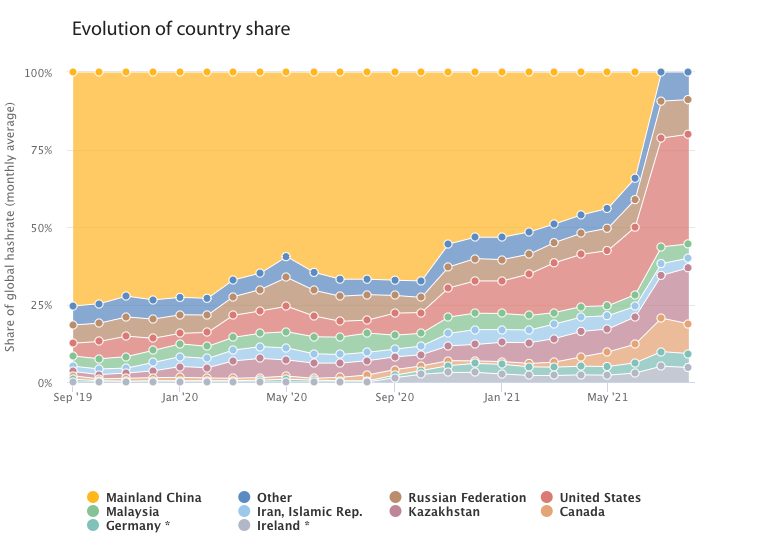Bitcoin Network Closes in on Hash Rate From Before China Crackdown
The Bitcoin network has almost restored its compute performance — the estimated number of total terahashes per second — following the ban of cryptocurrency mining in China in early July, reports Bloomberg. To a large degree, the recovery was caused by relocation of Chinese mining farms to other countries and deployments of new farms in countries like the U.S.
The cumulative number of terahashes per second (TH/s) peaked at around 180.666 million TH/s on May 14, but dropped to 86 million TH/s by July 4 after Chinese authorities banned cryptocurrency mining in the country, according to data from Blockchain.com. But this week the global Bitcoin hash rate was back to 175.588 million TH/s, which means that the network almost restored its mining capability.
China accounted for around 44% of the global Bitcoin hash rate as of May 2021, based on figures published by the Cambridge Centre for Alternative Finance, so once it was out of the game, the compute power of the Bitcoin network dropped harshly. But cryptocurrency farms started to quickly move their equipment from China to nearby countries, namely Kazakhstan and Russia, or even overseas, to the U.S. As a result, the U.S. became the world's leading Bitcoin mining country as of August, followed by Kazakhstan and Russia.
Bitcoin mining farms are relatively easy to deploy since all their operators care about are things like ample of space, internet connection, and stable supply of power (preferably cheap power generated by coil-fueled power plants). Therefore, it is not surprising that the Bitcoin network has managed to restore its compute performance in less than six months.
"Unlike traditional data centers that require multiple redundancies to avoid going offline, one of the biggest advantages of a Bitcoin mining data center is its flexibility and the ease in which it can unplug and plug back into the grid, which makes crypto mining a power load balancer for nuclear and renewables facilities that want to avoid shutting down during periods of weak demand," a report by BTIG LLC reads, according to Bloomberg.
Get Tom's Hardware's best news and in-depth reviews, straight to your inbox.

Anton Shilov is a contributing writer at Tom’s Hardware. Over the past couple of decades, he has covered everything from CPUs and GPUs to supercomputers and from modern process technologies and latest fab tools to high-tech industry trends.
-
-Fran- That's going to do wonders for, what I'm reading in many different places, an already saturated power grid in most locations of the USA. I wonder how many of those moves are using self-sustainable energy and/or renewable ones. Also, power doesn't come free, so I'd imagine that's going to have short-term implications for most of the people living big mining areas.Reply
Regards.

